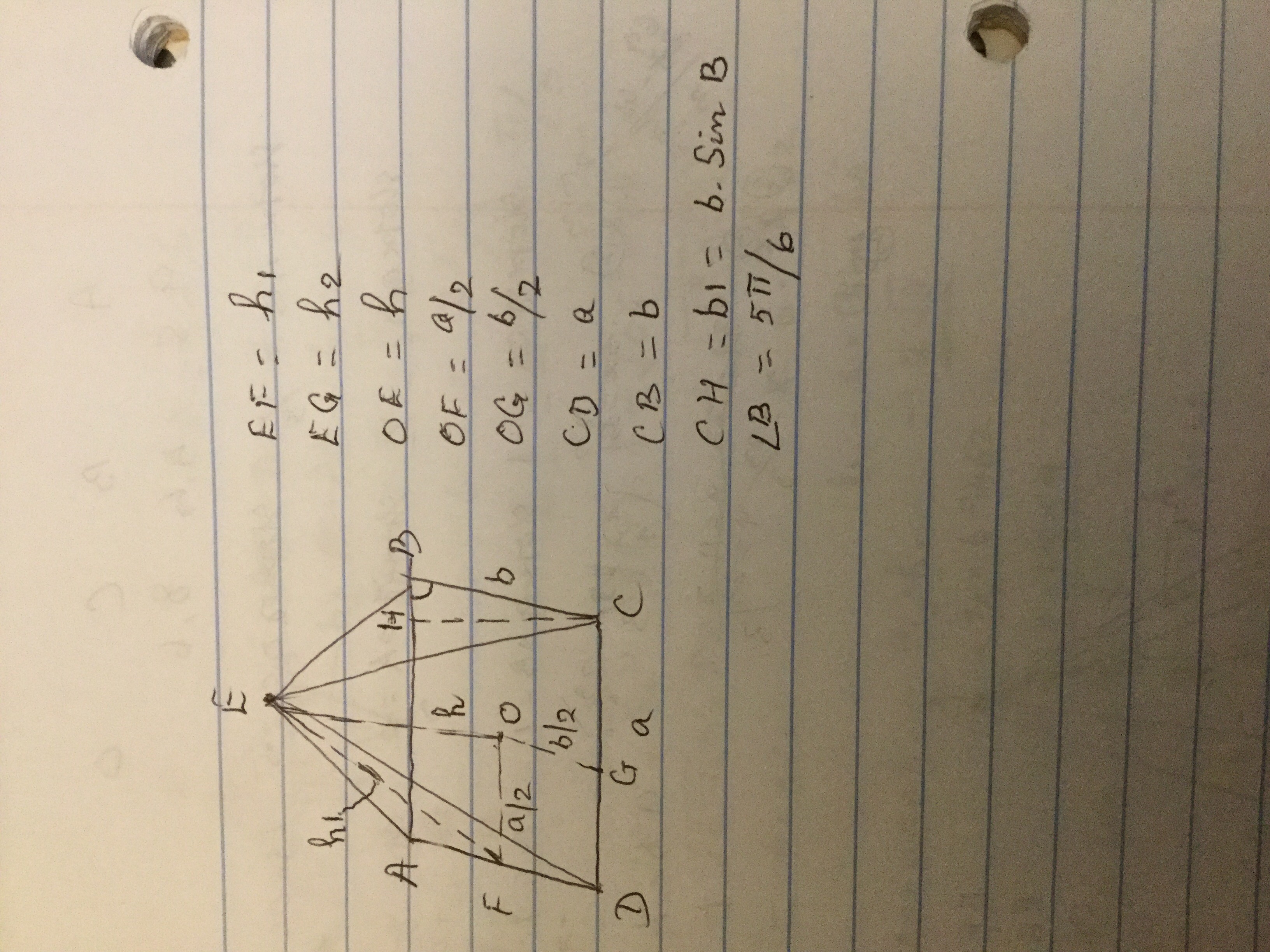A pyramid has a parallelogram shaped base and a peak directly above its center. Its base's sides have lengths of #7 # and #2 # and the pyramid's height is #4 #. If one of the base's corners has an angle of #pi/3#, what is the pyramid's surface area?
1 Answer
Dec 7, 2017
T S A = 51.616
Explanation:
Area of parallelogram base
Area of
Area of
Lateral surface area =
Total surface area =Area of parallelogram base + Lateral surface area

